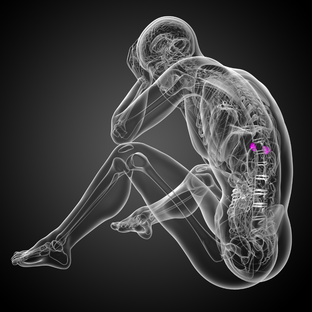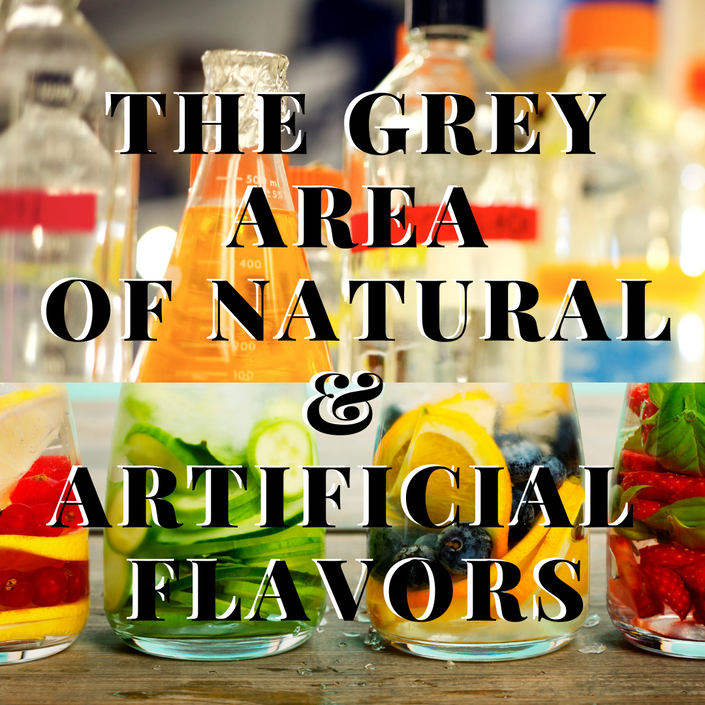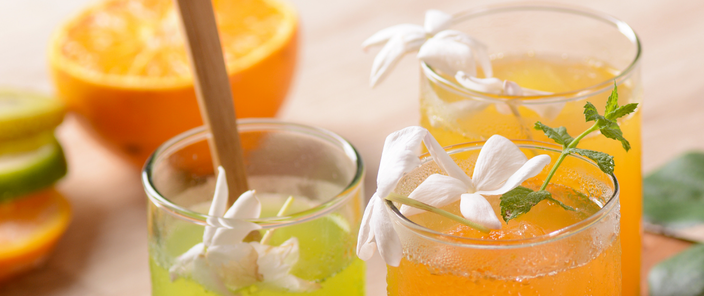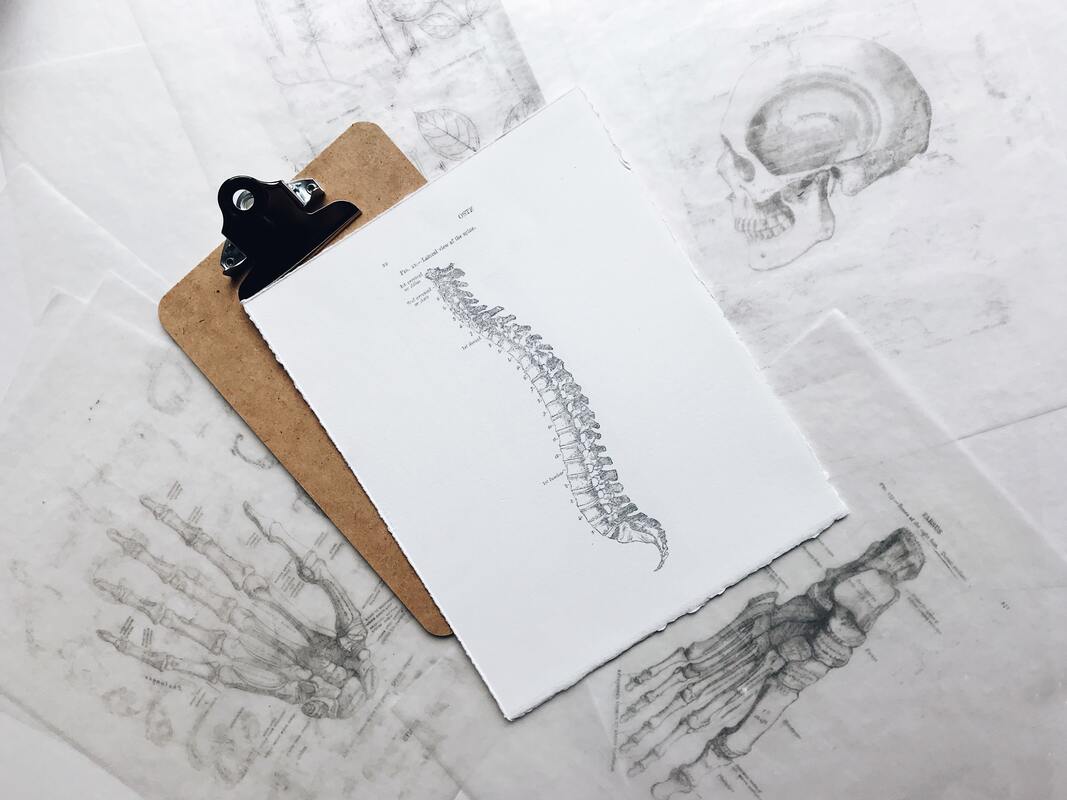 By: Matthew Smith, DACM, MSOM, Dipl.Ac., CPT ***Disclaimer: This article is not intended to be used as grounds to claim a cure of any disease. If you are thinking about using an herb, supplement, or therapy of any kind please first consult your primary care provider *** Healthy & Better Tasting Naturally Flavored Water? Well it is easy to make and truthfully I enjoy the process, and especially drinking it! But before we dive into that, what even inspired me to write this article in the first place? Everyone Has An Opinion From Safe To Toxic When It Comes To Flavors Sounds like a joke trying to make water “healthier” right? Well there is a deeper reason to why I decided to bring this idea to the forefront. You may actually be surprised by this but there are a lot of misunderstandings when it comes to “flavors” that are in beverages and rightfully so. It is common to not know the difference regarding what the FDA allows as an artificial flavor, a natural flavor, or natural essence. There are blogs and individuals who seem to give people the idea that a natural flavor is toxic, while there are others who may claim that artificial flavors are nothing to pay attention to. So in this article I wanted to help clear some of that up as well as give you an easy and enjoyable recipe you can make yourself that will give you a little antioxidant pep in your water. The FDA Guidelines, A Beaver's Anus and Science Flavors… Now this is a bit of a scary and eye opening one. Let’s start off with the clearer picture here and I will do my best to simplify based on what the FDA guidelines read. If you would like to see them for yourself you can access them HERE. Let’s keep it simple to start, natural flavors and natural essences are very similar based on the FDA guidelines. In simple terms, there must be some sort of natural derivative present in the flavoring for it to be considered a natural flavor (U.S. Food and Drug Administration, 2020). However, it is not as simple as that and so what seems to be the issue? Well, the flavor itself doesn’t tell the whole story. This is because the actual process to getting to that natural flavor can be not as “natural” as you may think it is. Personally, when I used to think of natural orange essence, I would picture a little bit of squeezed orange or orange puree, or at the very least orange oil. The truth is, yes that could be the case. But in most foods, natural flavors are way more complicated than that. There are extensive processes that take place in order to create these natural flavors. The natural flavor vanilla for example could be derived from vanilla beans or the castor sacs of beavers (Kennedy, C.R., 2015), yumm… but don’t worry the castor sacs are different than the beaver’s anal glands, they’re just near one another. Anyway, back to the flavors. The point I am getting across here is that if it did not originate in a lab, it can still be considered a natural flavor after it has been altered in a lab. The origin is natural and therefore it could still fall under the category of a natural flavor. What is not taken into account in food products is if there are pesticides or chemicals used prior to harnessing the natural flavor. This is why we end up in such a gray area with natural flavors. Much to my surprise, there is even the argument that artificial flavors are “safer” than natural flavors because artificial flavors tend to have a “simpler chemical composition” (Scientific American, 2002). Well It Turns Out There Isn't A Huge Difference As it turns out there is not much of a difference between natural and artificial flavors because in the end they both are processed in a lab by a professional flavorist and tend to still have similar chemical constituents in them to still maintain the same flavor (Scientific American, 2002). This likely comes as a shock to many, because we have been trained to think natural and artificial are usually more easily distinguishable. The issue with all of this is the fact we really do not know what went into making a natural or artificial flavor. This is why there will always be a gray area with the present definitions placed by the FDA. This essentially means, you don’t completely know what you are eating or drinking and therefore, you do not know how it could affect your health. Here Is What I Do About It When It Comes To My Flavored Water Therefore, I always err on the side of caution and look for more “actually natural” alternatives. Instead of going to the store and buying whatever cheap flavored water I could find (which was usually in plastic where phthalates can become a potential health concern) I decided to start making my own instead. The best water to use would be one that comes from a glass bottle, but I use aluminum cans when I cannot find glass (not as good but still better than plastic). This can be as simple as grabbing a nice tasting fruit like blueberries and mashing them up or processing them into a puree. I personally like to use a mortar and pestle (I like traditional ways of making food when possible). Preferably using a non-gmo and organic fruit or vegetable (like a cucumber) you can flavor your water so easily and make it much more enjoyable to drink. Not to mention, if you use carbonated water, you can add more carbon dioxide to your system which can actually be a good thing for your performance. While that may be a conversation for another day, Ben Greenfield has some interesting things to say about that in his book “Boundless” and you can find him talking about it in his blog HERE (Greenfield, B., 2019). Ingredients for your Healthier Naturally Flavored Water -Water or Carbonated Water -Food, Vegetable or Spice of your Choice: An easy go to I like is some blueberries and strawberries -Smash or process the ingredients until you have made a puree, pour into a class and combine with your water. Keep It Stupidly Simple It really is that simple and now you can have a better grasp of what is going into your body. As a result you are removing many of the chemical concerns that could be hiding within the natural or artificial flavors and plastics that you would normally consume in your water on a daily basis. Have fun with it and enjoy the real thing, you can experiment and you may surprise yourself how you suddenly become a master flavorist in your own kitchen! But I Don't Have Time! If you simply do not want to take the time and you are always on the go I personally would recommend the brand Spindrift. This brand uses fruit puree and water rather than utilizing natural or artificial flavors. I even tested it myself by opening one and leaving it for several weeks to see how well it was preserved. It turns out it became moldy and therefore the puree was breaking down as a normal fruit would in water so I gave it the natural and safer green light of approval. For the record, I am not sponsored by spindrift, I actually just like their product. You can have a look at spindrift and purchase it here: SPINDRIFT References: Greenfield, B. (2019, August 27). The ultimate breathwork ninja guide: How to banish stress & kiss high cortisol goodbye. Ben Greenfield Fitness - Diet, Fat Loss and Performance Advice. Retrieved September 13, 2021, from https://bengreenfieldfitness.com/article/the-ultimate-breathwork-ninja-guide-how-to-banish-stress-kiss-high-cortisol-goodbye/. Kennedy, C. R. (2015, September 21). The flavor rundown: Natural vs. artificial flavors. Science in the News. Retrieved September 13, 2021, from https://sitn.hms.harvard.edu/flash/2015/the-flavor-rundown-natural-vs-artificial-flavors/. Scientific American. (2002, July 29). What is the difference between artificial and natural flavors? Scientific American. Retrieved September 13, 2021, from https://www.scientificamerican.com/article/what-is-the-difference-be-2002-07-29/. U.S. Food and Drug Administration. (2020, April 1). CFR - code of federal Regulations Title 21. accessdata.fda.gov. Retrieved September 13, 2021, from https://www.accessdata.fda.gov/scripts/cdrh/cfdocs/cfcfr/cfrsearch.cfm?fr=501.22. 
0 Comments
By: Matthew Smith, DACM, MSOM, Dipl.Ac., CPT ***Disclaimer: This article is not intended to be used as grounds to claim a cure of any disease. If you are thinking about using an herb, supplement, or therapy of any kind please first consult your primary care provider *** Most of Us Are Not Hunter/Gatherers So you need food, you are not a hunter/gatherer so you are slightly at a loss for the quality of your food. Why? Because now you have to rely on companies to do all the dirty work for you. Good, wholesome, food is essential to your health, but how do we know if it is good for us or not? You have probably heard it a million times, “eat more fruits and vegetables” right? Well sure, that is a really good start. Fruits and vegetables get you necessary dietary fiber, vitamins and nutrients that are essential for your physiological functions. But how do you know the difference between the organic watermelon versus the conventional watermelon versus the packaged and freeze dried watermelon chips? Seems like a perfectly valid option if they are all in fact watermelon in the end right? Well… not exactly… Quick Tip A nice quick tip I like to give my clients is to shop on the outer edges of the grocery store. The reason for this is because most of the whole foods that are available tend to be on the periphery, and most of the processed, packaged foods tend to be placed in the aisles. I am not saying never go into an aisle for some things on the list, but when it comes to real food we are talking about a few staples. Basics As humans we are omnivores by genetic makeup. This means our bodies have the ability to eat both plants and meats. If we go back to the basics, these are what we ultimately need to survive in the world. Unfortunately not everyone today has the ability, time, luxury, or space to tend to a garden for crops or go hunt for meat on a regular basis. Modern day technology has simplified a lot of this for humans, but in many cases, there is reason for caution. Not All Food Is Created Equal Not all food is created equal. Since we may not need to physically grow and forage our own food, in a way we still do at the grocery store or the market. As humans in a modern day society we still need to decipher what foods will make us feel good and ultimately fuel us to go about our daily lives. In the end we can save a lot of time, energy and resources to maintain a job, home, gym memberships and social gatherings with friends. If we need something, we can hop over to the closest store and there is practically a 100% chance you will leave with something along the lines of what you were looking for. Freedom At Last Healthier alternatives are hard to come by these days. Between allergies, food sensitivities and maintaining good taste; that can be a hard combination to create. However, that is an opportunity to create a goldmine for companies. Advertising that states you can eat a food you normally cannot have is an automatic niche market for a company. For example, look at the ingredients on a homemade loaf of wheat bread. They tend to be minimal, but for someone who suffers from celiac disease cannot eat wheat bread. A company that creates a bread that is gluten free, resembles regular wheat bread, and tastes really good automatically interests anyone with a gluten intolerance or allergy. As a result this niche population is ready to buy that product as soon as it hits the shelf regardless if there is a laundry list of ingredients that may not necessarily be in their best interest when it comes to their digestion and health. But it provides that one feeling in the form of a food they have longed for to find for so many years since developing that allergy or intolerance. Freedom at last… Processed Food Advertising This is the game of the processed food market. A company can make more money off of processing a product, creating an enhanced taste, and giving it a fancy looking label to catch your attention. Compare this to a farmer who specializes in selling a handful of crops. You are not going to find the same amount of patented processes for growing a crop (unless it is genetically modified which is a rabbit hole we will save for later), and thus, it is less unique, and as a result, is less of a niche market to sell to. For simplicity sake, a wheat crop is a wheat crop (again, not talking about GMO's here), nothing else. But a wheat cracker with sea salt from the dead sea, rosemary from morocco and sundried tomato from Italy all with under 5 calories per serving sounds a lot more appealing and "healthier" doesn’t it? Well, looks can be deceiving because we did not discuss preservatives, shelf life, rancid oils or nutritionally stripped wheat that may also be in those very crackers. These crackers can be marketed, sold and advertised in a beautiful way to convince you why they are not only unique, but actually healthy for you, without giving you all the information (Santana, M. O., et al, 2020). You Are Your Food Within Two Days Let’s keep it really simple, the less scientific looking names on the food label, the better it is probably going to be for you. Our bodies are designed to digest foods in their natural form. When we focus on processed foods, there are elements that are taken away, altered or added. This may be to remove a certain protein allergy, improve the flavor, or to match a specific calorie goal. It gets very complicated! So what is the point to all this and what happens when we are eating food that we cannot break down? I am sure you have read numerous articles that talk about “you are what you eat” and yes that is actually true. What you eat actually becomes “you” in 35-40 hours (Riccio, P., & Rossano, R., 2019). Let’s put that into perspective for a minute… This means that the snack you ate or the supplement you took, or the drink you consumed, becomes you at a cellular level within two days. Compound this for multiple days, weeks, months and years, and the changes become more and more apparent. This shows in your lab results, and how well you age. You Have The Freedom To Choose Everyone wants to look young, live pain free and ultimately thrive in their lives with the body they have been given. So is it going to be in your best interest to eat from a box or directly from the earth? Well, the choice is ultimately up to you, that is the beauty of having choices. Food should be enjoyed, it should be fun and you should be excited about what you eat! It is a dance between flavor, fuel and happiness. All it takes is a little learning, weighing your options and ultimately choosing what your goals and needs are when it comes to the food you eat. References: Riccio, P., & Rossano, R. (2019). Undigested Food and Gut Microbiota May Cooperate in the Pathogenesis of Neuroinflammatory Diseases: A Matter of Barriers and a Proposal on the Origin of Organ Specificity. Nutrients, 11(11), 2714. https://doi.org/10.3390/nu11112714 Santana, M. O., Guimarães, J. S., Leite, F., Mais, L. A., Horta, P. M., Bortoletto Martins, A. P., & Claro, R. M. (2020). Analysing persuasive marketing of ultra-processed foods on Brazilian television. International journal of public health, 65(7), 1067–1077. https://doi.org/10.1007/s00038-020-01456-6
9/2/2021 Sacroiliac Joint Pain & Sciatica Are More Than A Structural Problem, There Is Likely A Chronic Condition Developing In Your BodyRead Now By: Matthew Sabey Smith, DACM, MSOM, Dipl.Ac., LAc., CPT ***Disclaimer: This article is not intended to be used as grounds to claim a cure of any disease. If you are thinking about using an herb, supplement, or therapy of any kind please first consult your primary care provider *** I’ve Been There… Sacroiliac joint pain is something that used to keep me up at night. And we are talking every single night. Not to mention the chronic pain that came along with it during the day. That burning dull ache in the side of my hip that would go to my low back made me want to numb out for a while just to feel nothing. A painkiller was not the route I wanted to take. So maybe you reach for the over the counter NSAIDs or pump in some tylenol or maybe try that Omega 3 supplement your hippie friend suggested and call it a day. Well, when you’re a competitive strength athlete, you are bound to get a little beat up from time to time as your body is adjusting to heavy loads. Musculoskeletal imbalances, shifts in physiological function and everything in between just becomes a part of life as you begin to understand and dive deeper into learning the mechanisms that lead to your strength; or in this case, inhibit it. Something I have encountered time and time again in athletes, clients, and even myself is SacroIliac Joint Pain, also commonly referred to as SI Joint pain or for some this becomes sciatica. Sciatica is when there is pain that runs down the leg due to a disruption present in the sciatic nerve. It commonly only affects one side of the body and can have a number of causes like compression, disc herniation, or stenosis just to name a few (Mayo Clinic, 2021). What Is The Root Cause Of All This? While there are many causes, it is not out of the question for other factors to be at play that lead to this condition over time. My question became, “what is the root problem creating all this?” The reason I write both about SI joint pain and sciatica together is because they actually have a lot in common, and I am also here to say there is something you can do about it. Dare I say, there are also ways to prevent it as well. (Insert “GASP!”) So, let’s keep it simple for a minute. Typically when there is pain in this area, there is a lack of hip alignment. Your hips can get thrown off for a number of reasons. Many would point out if you are a side sleeper, if you sit on your wallet, or if you slump to one side sitting or standing, cross one leg over the other etc. The mechanisms are endless and sometimes it can be as simple as an adjustment to realign your hips again. There Is More To The Story But what about when that isn’t the whole story? Why was there a relaxation to allow our hips to get misaligned? Now say in the scenario you get your hips aligned every week from someone like the chiropractor. It probably makes you feel better and truthfully it probably really is helping with your healing process (I can speak from first hand experience and also when speaking to personal friends who are chiropractors). When something is out of place, it is important to put it back. Makes sense right? But what do we do to prevent it? We could sleep different, walk different, sit different, but in a scenario where none of that keeps us aligned (because we have repetitive patterns in life), we need to dig deeper. Now truthfully, I utilize chiropractors often, I have had wonderful success combining methods together and I must say, chiropractic care has been a big part of it, but not all of it. I Just Wanted Answers You see, when I was in my early twenties, spending my full training time as an Olympic Weightlifter, I had this endless dull ache in my right hip. It never seemed to go away, but I would at least get some relief when I was actively moving. Certain exercises would really set it off which meant I had to gear up to be in pain for weeks to “train through it.” But there was a lot I didn’t know about when it came to the cause of my pain outside of simply a structural imbalance. It turns out, there was more to the story; a lot more to the story. At this point I was in pain pretty much all the time. No matter what I did, my day usually ended with my massage my muscles with some hard trying to break up “scar tissue and tightened fascia.” While this actually was likely true, there was a deeper reason it was tight. I just did things like I thought everyone else did. I would roll out, warm up, lift, cool down and go about my day. Stretching was something I heard was good for me so I threw some of that in there too but it was kind of this extra casual thing. As I investigated further I found that my Quadratus Lumborum or “QL” was often tight on the same side my hip hurt. So I found it interesting how my pain seemed to move between my low back, my hip and sometimes down my hamstring. The reason this pain was occurring was due to something no doctor would have been able to tell me other than, tight muscles and fascia, “you should probably take it easy and try stretching.” I Dove Into Traditional Chinese Medicine So now we fast forward, and here I am out of my chronic sacroiliac joint pain. So what made the difference? To tell you the truth, it was more holistic than I would have ever realized. As I went through my doctoral training in traditional Chinese medicine (TCM for short), I came across a podcast that got my gears turning. (It was an episode on the Qiological podcast if you are curious.) It was talking about the connection between the kidney channel system and sciatica. This thought led me down a rabbit hole of investigation and further observation, not only for myself, but for folks I worked with. Since then I have taken note both in myself and in clients and it turns out I have found several common underlying triggers that tend to dictate an expression of sacroiliac joint pain. But, before I explain that, let me teach you a bit about TCM and pain first. Understanding Pain As Stagnation In traditional Chinese medicine we refer to pain as stagnation. Essentially this means that when something is “stagnant,” it creates a disruption in the body. Pain is your body saying, “danger danger” which is why it exists, it is a survival response. So, using an example of muscular pain with traditional Chinese medicine, we want to create more flow of “blood and qi.” To explain this more simply, we want to bring more blood, lymph, and nutrients to an area, relax the tightened muscles and fascia as well as improve the signaling communication with the brain. This is a reason something like acupuncture, tui na, gua sha, moxibustion, cupping etc are so effective over time because it is actively healing the present and underlying condition. But this is also something that takes time, it requires upkeep and nurturing to truly heal from anything. The Gallbladder and Urinary Bladder? NO! I Said My Hip Hurts! Back to the case of sacroiliac joint pain however, I have found that this usually breaks down to a relationship between the Gallbladder channel and the Urinary Bladder channel (The Gallbladder channel runs down the side of the leg and up the ribcage and the Urinary Bladder channel runs down the back of the leg and continues up the back). What does that mean and why does this matter? It means I was able to trace back my symptoms that related to these “channels” and it always seemed to explain the pattern of why myself or someone else was experiencing pain relating to their sacroiliac joint when laboratory scans showed that there was seemingly nothing wrong. The most common thread between the clients was either liver qi stagnation or a deficiency in kidney qi. So… what does that mean and how does it relate to sacroiliac joint pain or even sciatica? Well, this is a common thread that allows the hips to become misaligned. In TCM we explain things in meridian (aka channel) systems. To make it simple, there are “meridians” that we learn that run throughout the body that have certain acupuncture points. Each of these meridians and points have common symptoms associated with them. They are very specific which is why a well trained Doctor of Acupuncture and Chinese Medicine needs at least 5 years of schooling after 4 years of undergraduate schooling. Conveniently, in TCM each organ is paired with another. For the sake of our understanding here, we are going to reference how the Kidney pairs with the Urinary bladder and the Liver pairs with the Gallbladder. This is where it gets interesting to see the relationships. A couple common symptoms of liver qi stagnation include side pain, vertex or temporal headaches, upper back/neck pain, waking up to urinate between 1-3am, PMS symptoms, commonly feeling frustration or having outbursts of anger. In a simple way we can also refer to these in an umbrella term as stress. Ok, stick with me now. Endocrinology & Chronic Stress It is well known that chronic stress is not healthy for any of us, you can see it in research anywhere (Kanczkowski, W., et al., 2017). But where does the kidney/urinary bladder system fit into all of this? Well, let’s use endocrinology to help us out in relation to an actual kidney! A common hormone many have heard of is cortisol. Cortisol plays many important roles in the body but many associate its imbalance with stress. In short when we become stressed the adrenal cortex follows the direction of the hypothalamus-pituitary-adrenal axis to produce more cortisol (Thau, L. et al., 2021). If the stress is not regulated then cortisol will continue to produce which can lead to chronic disease. So how does this relate to the kidneys again? The adrenal cortex sits directly on top of the kidneys within the adrenal glands. Now if we also combine chronic stress with caffeine consumption, now we are asking our body to produce even more cortisol (Lovallo, W. R., et al., 2005)! Do you see a pattern yet? Chronic stress over time creates more work for the kidneys over time, thus decreasing its ability to function properly. An Understanding of the Root Cause Can Lead To More Predictable Symptoms The urinary bladder pairs with the kidney in TCM. So by treating the kidney, we help the pain that follows the Urinary Bladder channel. And by treating the liver, we help the pain that follows the Gallbladder channel. If we use channels to relate to structure, when one organ system does not function normally, it’s channel suffers. As a result it is another channel that needs to pick up the slack. This is why the Gallbladder channel and Urinary Bladder channel have this relationship in sacroiliac joint pain. When one suffers (exhibits symptoms that relate to it), the other channel needs to do more work to maintain structure and alignment! (For Practitioners: This is why tight muscles and ashi points are so easily found along one of these channels in a patient with sacroiliac joint pain or sciatica) So what is the big conclusion from all this? From a TCM perspective it can easily be explained that when there are no structural issues present, sacroiliac joint pain or sciatica could be as simple as too much stress in your life (in a very very simplified way of explaining it). This is why I use both TCM and biomedicine to explain this. Remember, this is something I used to deal with on a daily basis for several years with no known patterns I could find. I never knew why some days were better than others. But, these symptoms were at their worst during the most stressful time in my life and it turns out, I had a lot of the symptoms that related to liver qi stagnation which led to my kidneys becoming overly taxed. What Ultimately Brought Me The Relief & Prevention I Was Looking For So here is how I made my sacroiliac joint pain go away and continue to prevent it from coming back. 1. I began a daily practice of mobility in the form of yoga. Even 5 minutes helped me stretch the areas that were tight around my hips, back and legs (yes that included the QL too!) 2. I avoid using caffeine for workouts when possible and instead limit its use only for big workouts or competition time. 3. I make sure I get enough consistent sleep, if you are sleeping less than 7 hours per day, you are likely deficient in recovery and sleep (Hirshkowitz, M, et al., 2017) (Colten, H. R., & Altevogt, B. M., 2006). 4. I utilize acupuncture and herbs to support my kidneys and liver function which take care of both musculoskeletal imbalances as well as the psycho emotional aspects of liver qi stagnation and kidney qi deficiency. 5. If the pain ever comes back, I analyze if I am worn out, stressed and/or over-tired (over a period of at least several weeks). If the answer is YES, I go back to the beginning and get a chiropractic adjustment to place my hips back in alignment, and increase my acupuncture treatments to restore normal function to the muscles and associated neuron pathways. It Is About The Marathon, Not The Sprint This may sound like a lot of work but it was lifestyle changes that needed to occur in order to truly heal from my chronic pain. As soon as I decided I wanted to be out of pain, I was ready to make whatever changes were necessary to become free of it. This was a marathon, not a sprint. This is not something that will happen overnight. It is important to recognize how the human body is endlessly interconnected. It is impractical to ignore signs and symptoms while expecting them to mysteriously go away. If you catch it early and implement simple changes in the beginning, you save yourself from spending a lot of money, experiencing a lot more pain and sacrificing your quality of life in the long run. References: Colten, H. R., & Altevogt, B. M. (2006). Sleep disorders and sleep deprivation: An unmet public health problem. Institute of Medicine. Hirshkowitz, M., Whiton, K., Albert, S. M., Alessi, C., Bruni, O., DonCarlos, L., Hazen, N., Herman, J., Katz, E. S., Kheirandish-Gozal, L., Neubauer, D. N., O'Donnell, A. E., Ohayon, M., Peever, J., Rawding, R., Sachdeva, R. C., Setters, B., Vitiello, M. V., Ware, J. C., & Adams Hillard, P. J. (2015). National Sleep Foundation's sleep time duration recommendations: methodology and results summary. Sleep health, 1(1), 40–43. https://doi.org/10.1016/j.sleh.2014.12.010 Kanczkowski, W., Sue, M., & Bornstein, S. R. (2017). The adrenal gland microenvironment in health, disease and during regeneration. HORMONES, 13(3). https://doi.org/10.14310/horm.2002.1744 Lovallo, W. R., Whitsett, T. L., al'Absi, M., Sung, B. H., Vincent, A. S., & Wilson, M. F. (2005). Caffeine stimulation of cortisol secretion across the waking hours in relation to caffeine intake levels. Psychosomatic medicine, 67(5), 734–739. https://doi.org/10.1097/01.psy.0000181270.20036.06 Mayo Foundation for Medical Education and Research. (2020, August 1). Sciatica. Mayo Clinic. https://www.mayoclinic.org/diseases-conditions/sciatica/symptoms-causes/syc-20377435#:~:text=Sciatica%20refers%20to%20pain%20that,one%20side%20of%20your%20body. Thau L, Gandhi J, Sharma S. Physiology, Cortisol. [Updated 2021 Feb 9]. In: StatPearls [Internet]. Treasure Island (FL): StatPearls Publishing; 2021 Jan-. Available from: https://www.ncbi.nlm.nih.gov/books/NBK538239/  Health & Human Performance Coach, Doctor of Acupuncture and Chinese Medicine, Professor, and competitive strength athlete, Matthew Sabey Smith DACM, MSOM, Dipl.Ac, LAc., CPT is the owner and founder of Strength Smith Training Systems LLC. With an extensive background in integrative holistic health, training and coaching, Dr. Matt uses his knowledge to help individuals improve their training, boost their recovery and maintain optimal balance as they chase their athletic, fitness and health endeavors. |
Details
Topics
All
Archives
June 2022
Author:Doctor of Acupuncture and Chinese Medicine, Coach, Professor, and competitive strength athlete, Matthew Sabey Smith DACM, MSOM, LAc., Dipl.Ac,, CPT is the owner and founder of Strength Smith Training Systems LLC. With an extensive background in integrative holistic health, training and coaching, Dr. Matt uses his knowledge to help individuals improve their training, boost their recovery and maintain optimal balance as they chase their athletic, fitness and health endeavors. |





 RSS Feed
RSS Feed